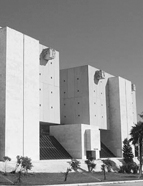

................................
The earthquake was not the only natural disaster to impact the archive. According to Vilhena Barbosa ( Creação dos archivos... , 1874), during the reign of King João III, the archive also endured a fire, prompting the monarch to undertake renovations that greatly improved the storage conditions for books and other documents, which in earlier times had been kept in "large iron-lined chests," "trunks or writing desks," " cabinets, and shelves " (J. Pessanha, A Torre do Tombo , 1906). I n his reports, Tomé Lopes mentions parchments stored in drawers. A manuscript from the Ajuda Library, titled Livros e papeis que estaõ nos almarios da caza da Coroa [Books and Papers that are in the Cabinets of the House of the Crown] (1741), referring to the 17th century, lists 15 cabinets and details their contents. In the Alfabeto Mistico , a two-volume index compiled by António Dantas Barbosa in 1729-1730, 20 cabinets from the House of the Crown and their respective contents are described (P. Azevedo and A. Baião, O Arquivo da Torre... , 1989 [orig. 1905], pp. 9-10). Following the 1755 earthquake, it is known that Manuel da Maia reorganised bundles of documents from the old drawers into wooden boxes and, in 1765, prepared a two-volume index titled Indice dos documentos que se guardavam nas XX gavetas antigas deste Real Archivo da Torre do Tombo [ Index of the documents stored in the twenty old drawers of this Royal Archive of the Torre do Tombo ] (Idem, p. 24).
Regarding the archive's personnel, João Pedro Ribeiro ( Memorias authenticas... , 1819) informs us that, initially, the archive was managed by João Anes, the Vedor da Fazenda [Overseer of the Treasury] (c. 1387), who is thus considered the first Guarda-Mor [ Chief Keeper ]. He was succeeded by Gonçalo Esteves, an accountant at the Contos de Lisboa (financial office or court responsible for managing public accounts) , and later by Esteves’s son, Gonçalo Gonçalves, accountant of the Almoxarifados (warehouses or storehouses) o f Setúbal and Óbidos, who was appointed Guarda-Mor in 1414. Fernão Lopes, the fourth in the line of Guarda-Mores , is mentioned as “keeper of the deeds of the Tombo ” in a document from 1418, although the exact date of his appointment is unknown. According to António Baião, it was precisely “with Fernão Lopes that the archive gained autonomy, that is, it came to have its own staff” (A. Baião, “As Certidões da Torre do Tombo…” ["The Certificates of the Torre do Tombo..."] 1936, p. 111). Fernão Lopes was succeeded by Gomes Eanes de Zurara, who, like his predecessor, also held the position of Cronista-Mor [ Chief Chronicler ] of the Kingdom. Other Guarda-Mores also served as chroniclers, such as Rui de Pina, Fernão de Pina, Damião de Góis, and António de Castilho (P. Azevedo and A. Baião, O Arquivo da Torre... , 1989 [orig. 1905], pp. 212-215 and A-34). From the reign of King Duarte, references to escrivães (scribes) begin to appear, who issued certificates; by the time of King Afonso V, the archive already had a “dedicated scribe” (J. P. Ribeiro, Memorias authenticas... , 1819, p. 20). In the 16th century, other staff members were documented, such as guards, a doorkeeper, and even “a slave sweeper” ( Idem ). During the reign of King João V, eight “officials of reform” were appointed to the Royal Archive, tasked with producing copies of documents for the Royal Academy of Portuguese History, founded in 1720, and creating indices of the archive’s documentation.
This work is financed by national funds through FCT - Foundation for Science and Technology, I.P, in the scope of the projects UIDB/04311/2020 and UIDP/04311/2020.
